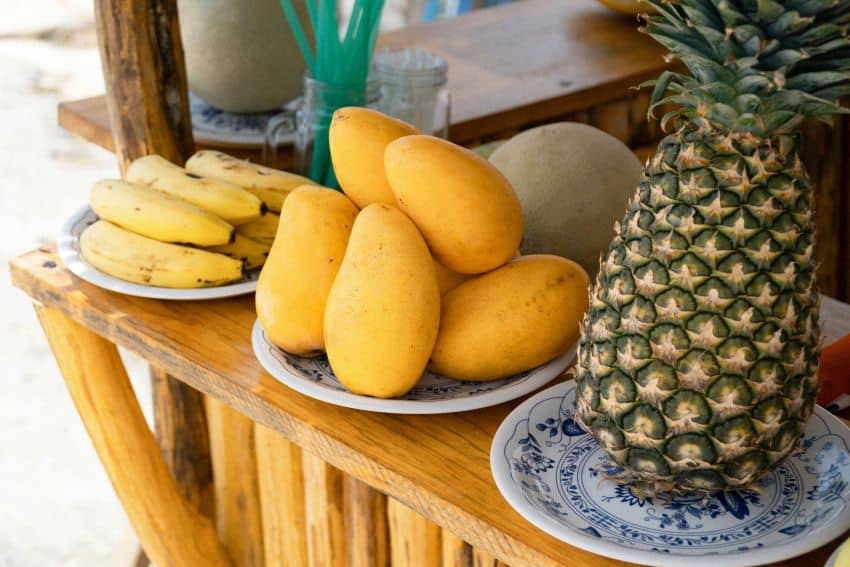
When fruits ripen naturally, they’re full of nutrients and flavor that are otherwise lost in the artificial maturation process. Because Mother Nature is so smart, she offers what we need, when we need it — have you ever wondered why blueberries peak in the summer? The high level of antioxidants help protect your skin from sun damage.
Mexico harvests 20.5 million tons of fruit annually, much of which is exported to its two top trading partners — Canada and the United States. Nonetheless, produce markets in Mexican towns and cities overflow with national produce according to availability — just follow our handy preparation guide and enjoy.
So if you’re ready to dive into the wide world of Mexican fruit, here’s an easy guide for my fellow fruit lovers to refer to throughout the year!

Mangos
Eaten in a multitude of ways in Mexico, mangoes can be found in everything from ceviche to smoothies. There are hundreds, if not thousands, of mango varieties across the world and at least a dozen of those are produced in Mexico. Popular types include Ataúlfo, Haden, Tommy Atkins, and Kent, each with its own particular flavor and sweetness.
The golden “king of fruit” was likely introduced to Mexico from Asia via the Spanish conquistadores, thriving in the rich environments of the Pacific and Southern coasts in states like Michoacán, Chiapas, Sinaloa, and Guerrero.
Pineapple
Without it, would tacos al pastor even exist? The biggest producer of pineapple is Costa Rica, but Mexico follows close behind. The sweet-and-tangy treat is grown mostly in Veracruz and is often sold on the street in its natural state or in agua fresca during the season.
Season: October to July, with the highest output in June and July.
 Avocado
AvocadoThe national fruit of Mexico is actually a berry, yet it is rarely found in a fruit salad. At their ripest, avocados are creamy and filling, acting as an excellent cheese substitute for vegans. Enjoy them guacamole-style with chips, sliced on huevos rancheros, or alone with salt.
There are reportedly over 500 types of avocados, which fall into three groups: Indian, Guatemalan — and, you guessed it — Mexican, which is the world’s largest producer and exporter. Michoacán’s rich, volcanic soil and sunny climate lends itself to year-round cultivation and remains the country’s leading provider.
Season: Year-round
 Prickly Pear
Prickly Pear
Recent arrivals in Mexico might have run into confusion with this one, as prickly pears are locally referred to as tuna. In their natural form, they are, indeed, quite prickly, sprouting from the staple nopal cactus.
The egg-shaped fruits are usually sold with the spikes removed, just like nopales, and can be green, yellow, pink, or red on the outside. Removing the thick skin unveils a delicate green or red filling with black seeds and a flirty, floral taste. Ingest as a juice, a marmalade, or simply as is.
Eight varieties can be found in Mexico, with growth concentrated in the State of México, Puebla, and Zacatecas.
Season: Starting in April, production peaks in July through September.

 Prickly Pear
Prickly Pear
Leave a Reply